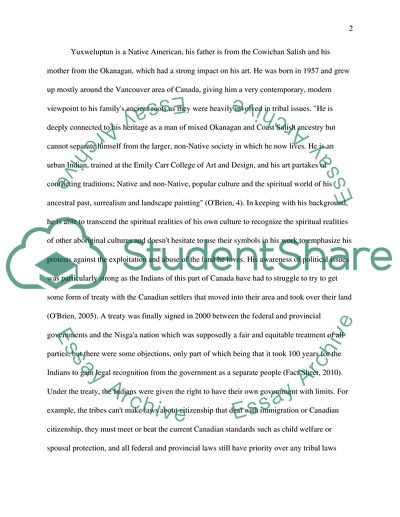Cite this document
(“Lawrence Paul Yuxweluptun - contemporary artist Research Paper”, n.d.)
Lawrence Paul Yuxweluptun - contemporary artist Research Paper. Retrieved from https://studentshare.org/visual-arts-film-studies/1598773-lawrence-paul-yuxweluptun-contemporary-artist
Lawrence Paul Yuxweluptun - contemporary artist Research Paper. Retrieved from https://studentshare.org/visual-arts-film-studies/1598773-lawrence-paul-yuxweluptun-contemporary-artist
(Lawrence Paul Yuxweluptun - Contemporary Artist Research Paper)
Lawrence Paul Yuxweluptun - Contemporary Artist Research Paper. https://studentshare.org/visual-arts-film-studies/1598773-lawrence-paul-yuxweluptun-contemporary-artist.
Lawrence Paul Yuxweluptun - Contemporary Artist Research Paper. https://studentshare.org/visual-arts-film-studies/1598773-lawrence-paul-yuxweluptun-contemporary-artist.
“Lawrence Paul Yuxweluptun - Contemporary Artist Research Paper”, n.d. https://studentshare.org/visual-arts-film-studies/1598773-lawrence-paul-yuxweluptun-contemporary-artist.


